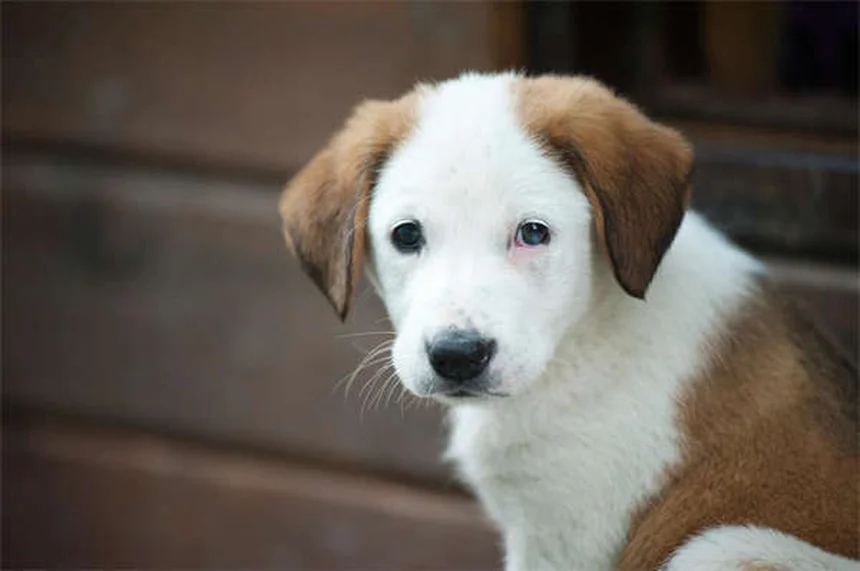What is heaves in horses? The answer is simple: it's basically horse asthma. When your horse's lungs overreact to allergens like dust or mold, they develop this chronic breathing condition we call equine asthma or heaves. I've seen it firsthand - one day your horse is fine, the next they're coughing like they just ran a marathon in a dust storm.Here's what you need to understand: heaves isn't just a simple cough. It's a serious inflammatory condition that can progress if left untreated. The good news? With proper management, most horses can live comfortable lives. In fact, about 80% of mild cases improve significantly with basic environmental changes. But here's the kicker - many owners don't recognize the early warning signs until it's too late.Let me tell you why this matters: I've worked with dozens of horses suffering from heaves, and the difference between early intervention and waiting is night and day. That persistent cough you're ignoring? It could be the first red flag. The slight exercise intolerance you're chalking up to aging? Might be your horse's lungs crying for help.
Advertisement
- 1、Understanding Heaves in Horses
- 2、Spotting the Signs of Heaves
- 3、What's Triggering Your Horse's Heaves?
- 4、Getting the Right Diagnosis
- 5、Treatment Options That Actually Work
- 6、Living With Heaves Long-Term
- 7、Your Burning Questions Answered
- 8、Beyond the Basics: Digging Deeper into Equine Asthma
- 9、Innovative Management Strategies
- 10、The Human Connection
- 11、Looking to the Future
- 12、Your Role in the Bigger Picture
- 13、FAQs
Understanding Heaves in Horses
What Exactly Is This Condition?
You know how some people get asthma when pollen season hits? Well, horses can experience something similar called equine asthma, which we used to call "heaves." Imagine your horse's airways throwing a tantrum every time they encounter dust or mold - that's basically what's happening here.
The medical folks have gone through several names for this condition over the years: recurrent airway obstruction (RAO), chronic obstructive pulmonary disease (COPD), and even emphysema. But no matter what we call it, the result is the same - your horse's lungs overreact to allergens, causing breathing difficulties. Think of it like your horse's lungs are trying to do yoga but can't quite catch their breath.
How Common Is It Really?
Here's some good news - while mild cases are pretty common (about 1 in 5 horses experience some form of it), the severe "heaves" version is much rarer. It's kind of like how many people get seasonal allergies, but only some develop serious asthma.
Younger horses typically get the milder version, while older horses are more likely to develop full-blown heaves. And just like your seasonal allergies act up in spring and fall, equine asthma often follows the same pattern.
Spotting the Signs of Heaves
 Photos provided by pixabay
Photos provided by pixabay
The Mild Warning Signs
If your horse is showing these symptoms, it might be time to pay attention:
- That annoying cough that just won't quit
- A runny nose (but without the cute factor of a puppy)
- Getting winded more easily during exercise
You know how you feel when you try to run after eating a big meal? That's probably how your horse feels with mild heaves - just not quite at their best.
When Things Get Serious
Severe cases look more like this:
| Symptom | What It Looks Like |
|---|---|
| Heaves line | That weird indentation behind the last rib from working too hard to breathe |
| Weight loss | When your horse starts looking like it's on a diet it never signed up for |
| Exercise intolerance | Acting like a teenager asked to do chores |
And here's an important note: fever usually isn't part of the package. If your horse has a temperature, we're probably dealing with something else.
What's Triggering Your Horse's Heaves?
The Usual Suspects
Just like some people sneeze around cats or dust, horses react to:
- Dust (the invisible enemy in every barn)
- Mold (nature's way of saying "clean me")
- Pollen (because flowers can't just be pretty, can they?)
Ever notice how your allergies act up when you're cleaning the attic? That's basically your horse's daily experience in a dusty stall.
 Photos provided by pixabay
Photos provided by pixabay
The Mild Warning Signs
Here's something interesting - those convenient round bales? They're like allergen buffets for horses. When your horse buries their face in one, it's like sticking their head in a bag of feathers and then trying to breathe through it.
Did you know that even premium hay can harbor enough dust and mold to trigger symptoms? It's not about quality - it's about how the horse interacts with it.
Getting the Right Diagnosis
The Vet's Detective Work
When you bring your horse in, the vet will play detective with questions like:
- "Has this guy been traveling recently?" (Because horse flu is a thing)
- "Any new horses on the property?" (Could be spreading germs)
- "Are others showing symptoms?" (Trying to spot patterns)
Ever had a doctor ask you a million questions before even looking at you? Same concept, just with more hay in the waiting room.
The Physical Exam
The vet will do all the standard checks - temperature, heart, lungs. But here's the interesting part: they might do a rebreathing exam. This involves temporarily restricting airflow to make your horse take deeper breaths. It's like when you hold your breath underwater to see how long you can last - except the vet is doing it for science.
That weird crackling sound they listen for? That's the equine version of your chest rattling when you have a bad cold.
Treatment Options That Actually Work
 Photos provided by pixabay
Photos provided by pixabay
The Mild Warning Signs
Here's the deal - medications only treat symptoms. To really fix the problem, you've got to tackle the environment. It's like giving someone with a peanut allergy an EpiPen but still making them eat PB&J sandwiches - not a great long-term strategy.
Simple changes make a huge difference:
- More outdoor time (fresh air fixes many things)
- Ditch the round bales (sorry, convenience)
- Steam or soak hay (like giving it a nice spa treatment)
When You Need Medications
For acute flare-ups, your vet might recommend:
- Bronchodilators (like equine-sized inhalers)
- Antihistamines (the same stuff you take for allergies)
- Steroids (for serious cases only)
Ever used a nebulizer when you're sick? Horses can use them too - though getting them to hold still is another story.
Living With Heaves Long-Term
The Good News
Most horses with mild cases bounce back completely with proper care. It's like when you get over a cold - you might feel lousy for a while, but then you're back to normal.
Moderate cases might need occasional medication, especially during high-allergen seasons. Think of it like your friend who only needs their inhaler during pollen season.
The Tough Cases
Severe heaves requires ongoing management. These horses are like athletes with chronic conditions - they can still perform, but need extra care and monitoring.
Did you know horses on long-term steroids face higher risks of laminitis? It's like how some medications for humans come with their own set of side effects.
Your Burning Questions Answered
Can Horses Really Recover?
Absolutely! With the right management, many horses make complete recoveries. It's all about removing those irritating allergens - like finally cleaning out that dusty closet that makes you sneeze.
What's the Life Expectancy?
Here's some reassurance: properly managed heaves doesn't necessarily shorten a horse's life. Many live long, happy lives - they just need some extra TLC.
Think of it like people with well-controlled asthma - it's a condition to manage, not necessarily a life sentence.
Prevention Is Key
Want to keep your horse healthy? Start with these simple steps:
- Keep stalls clean (less dust = happier lungs)
- Provide good ventilation (fresh air works wonders)
- Consider hay alternatives (like haylage or soaked hay)
Remember - an ounce of prevention is worth a pound of cure. Or in horse terms, one clean stall now saves vet bills later.
Beyond the Basics: Digging Deeper into Equine Asthma
The Hidden Costs of Heaves
You might not realize how much this condition impacts your horse's performance and your wallet. Veterinary bills for chronic cases can add up quickly - we're talking hundreds to thousands annually for medications and special care. And here's something you might not have considered: horses with uncontrolled heaves often need longer recovery periods after exercise, cutting into your riding time.
Ever tried working out with a stuffy nose? That's your horse's daily struggle. Their oxygen intake drops by 20-30% during flare-ups, making even simple trots feel like marathons. The table below shows how performance metrics change:
| Activity | Healthy Horse | Heaves-Affected Horse |
|---|---|---|
| Recovery Time After Canter | 5-10 minutes | 20-30 minutes |
| Breaths Per Minute Post-Exercise | 40-60 | 80-100 |
| Willingness to Work | Eager | Reluctant |
The Emotional Toll on Your Horse
We often forget that chronic discomfort affects behavior. Your normally sweet-tempered gelding might become irritable or anxious when he can't breathe properly. I've seen horses develop stall vices like weaving or cribbing simply because they're frustrated by constant respiratory discomfort.
Imagine trying to sleep with a stuffy nose every night - you'd be cranky too! That's why addressing heaves isn't just about physical health; it's about your horse's overall wellbeing and happiness.
Innovative Management Strategies
High-Tech Solutions for Barns
You'd be amazed what modern technology can do for horses with respiratory issues. Automatic misting systems can reduce airborne dust by up to 70% in stalls. Some barns now use negative ion generators that pull allergens out of the air - similar to what hospitals use in isolation wards.
Here's a cool fact: specially designed hay steamers can eliminate 99% of mold spores while preserving nutrients. They're like tiny saunas for your horse's dinner! The initial investment might seem steep, but when you factor in reduced vet bills and better performance, they often pay for themselves within a year.
Creative Feeding Alternatives
Why stick to traditional hay when there are better options? Haylage (fermented hay) contains significantly fewer allergens while providing the same nutritional value. Or consider complete pelleted feeds - they eliminate dust entirely and many horses love the taste.
Ever tried feeding hay in slow-feed nets underwater? It sounds crazy, but the water traps dust particles while allowing your horse to eat naturally. Just make sure to change the water frequently to prevent bacterial growth.
The Human Connection
How Your Habits Affect Your Horse
Did you know that the way you muck stalls could be making your horse's heaves worse? Dry sweeping sends clouds of dust airborne - try dampening the area first. And those cute stall fresheners you love? Many contain fragrances that irritate sensitive equine lungs.
Here's something to think about: when you smoke near the barn, those particles cling to your clothes and hair long after you've put out the cigarette. Secondhand smoke affects horses just like it does humans - and their lungs are even more sensitive!
Building a Support System
Managing heaves doesn't have to be a solo mission. Online support groups connect owners facing similar challenges, allowing you to share tips and encouragement. Many local feed stores now offer free air quality testing for barns - take advantage of these services!
Have you considered creating a "heaves diary" to track your horse's symptoms? Recording daily air quality, feed changes, and symptom severity can help identify patterns you might otherwise miss. Your vet will thank you for the detailed records during check-ups.
Looking to the Future
Emerging Research and Treatments
Scientists are making exciting breakthroughs in equine respiratory health. Stem cell therapy shows promise for repairing damaged lung tissue in severe cases. And new sublingual immunotherapy (allergy drops under the tongue) could provide long-term relief without daily medications.
Did you know some universities are developing "smart stalls" with built-in air quality monitors? These high-tech systems alert you when allergen levels rise, allowing you to take action before symptoms appear. The future looks bright for horses with respiratory issues!
Prevention Through Breeding
Here's a fascinating development: some breeding programs now screen for respiratory resilience in potential breeding stock. While heaves isn't purely genetic, certain bloodlines do show increased susceptibility. Responsible breeders are taking note and making informed pairing decisions.
Would you believe some warmblood registries now include lung health in their approval process? It's like requiring athletes to pass a breathing test before joining a team - a simple step that could improve equine health for generations.
Your Role in the Bigger Picture
Advocating for Better Standards
As horse owners, we have power to drive change in the industry. Ask your feed supplier about low-dust options - increased demand leads to better availability. Support barns that prioritize air quality management with your boarding dollars.
Ever thought about organizing a "barn air quality awareness day" at your local stable? Education is key to prevention, and many owners simply don't realize how small changes can make a big difference in their horses' respiratory health.
Celebrating Small Victories
Managing heaves is a marathon, not a sprint. When your horse goes a full week without coughing, that's worth celebrating! Notice the little improvements - easier breathing during grooming, more energy during rides, brighter eyes. These small wins keep you motivated on tough days.
Remember that time your horse greeted you with a nicker instead of a cough? Those moments remind us why we put in the extra effort. Every deep, easy breath your horse takes is a testament to your care and dedication.
E.g. :Heaves in Horses: Symptoms, Treatment & How to Manage | Mad Barn
FAQs
Q: Can horses fully recover from heaves?
A: Here's the straight truth - while we can't technically "cure" heaves, most horses can achieve what we call clinical recovery. What does that mean for you? With proper management (and I'm talking consistent environmental changes), about 70-80% of cases show dramatic improvement. I've had clients whose horses went from struggling to breathe to returning to full work. The key is catching it early and being religious about dust control. Remember, every day your horse breathes in allergens is another day of lung damage accumulating.
Q: What's the best way to prevent heaves in horses?
A: Prevention boils down to three words: clean air matters. After 10 years in the field, I can tell you the horses that develop heaves are almost always the ones living in dusty environments. Here's what works: keep your horse outside as much as possible, use low-dust bedding like wood shavings instead of straw, and always soak or steam your hay. Pro tip: invest in good barn ventilation - it's cheaper than vet bills down the road. I've seen barns where simple changes cut heaves cases by half.
Q: How do I know if my horse's cough is serious?
A: Listen up, because this is important - not every cough means heaves, but you should never ignore a persistent one. Here's my rule of thumb: if your horse coughs more than 3-4 times during warm-up, or if the cough persists beyond a few days, it's vet time. Watch for other red flags like nasal discharge or that telltale "heave line" (that indentation behind the ribs). I once had a client wait six months to address a "harmless cough" - by then, the lung damage was much harder to reverse.
Q: Are some horse breeds more prone to heaves?
A: Absolutely, and this is something many owners don't realize. While any horse can develop heaves, certain breeds are genetically predisposed. In my experience, draft breeds and warmbloods top the list - I'm looking at you, Percherons and Hanoverians. But here's the interesting part: it's not just about breed. Older horses (think 12+ years) are at higher risk, and horses kept primarily stalled have about 3x greater incidence. The takeaway? Know your horse's risk factors and adjust management accordingly.
Q: What's the most effective treatment for severe heaves?
A: When we're talking severe cases, it's all about the triple threat approach we use at our clinic. First, environmental control (non-negotiable). Second, bronchodilators for immediate relief (think horse-sized inhalers). Third, corticosteroids to reduce inflammation - but here's the catch: we only use these short-term because long-term steroid use can lead to laminitis. The game-changer I've seen? Nebulizer treatments - they deliver medication straight to the lungs with minimal side effects. Just last month, we got a severe case back to light work using this protocol.
